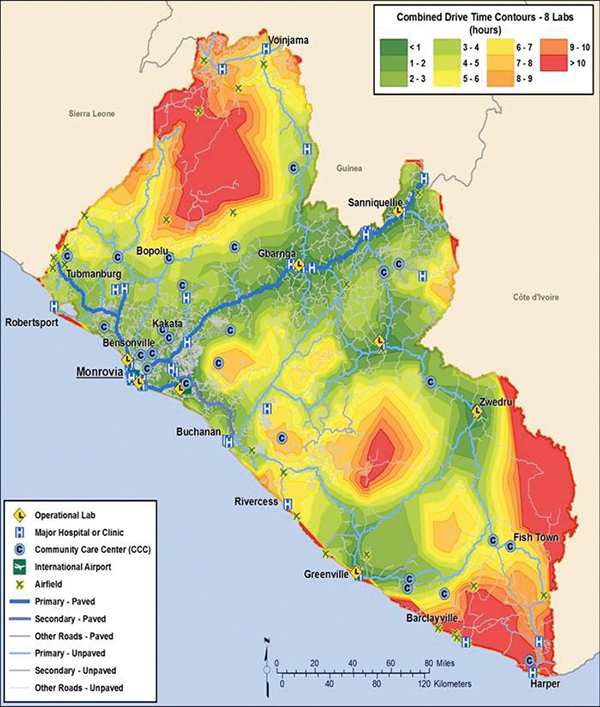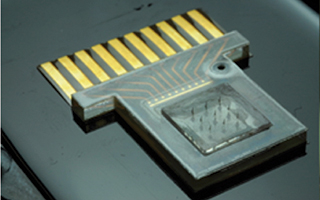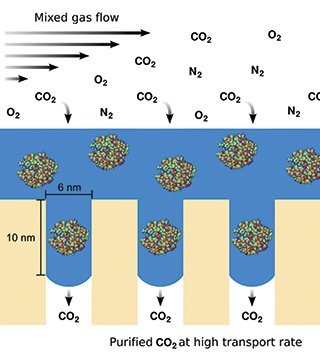Fighting Ebola

Contour map showing drive times and Ebola lab coverage in Liberia.
Sandia has been providing technical assistance to West Africa as part of the effort to control the Ebola epidemic. In Liberia and Sierra Leone we analyzed infrastructure and laboratory networks to improve sample transport and optimize laboratory placement. In Guinea and Sierra Leone, numerous Sandians served as laboratory coordinators for diagnostic laboratories. In Liberia we responded to an urgent request from the US National Security Council to help clear a blood sample backlog. As the epidemic recedes, Sandia is helping transition resources to local jurisdictions. (6800, 6100) IHNS, RGCBD

Nine-element microneedle array in plastic laminate fluidic manifold.
Sandia has developed arrays of microneedles integrated with electrochemical biosensors to monitor an individual’s state of health in real time by analyzing interstitial fluid sampled through the skin. In vitro laboratory experiments have demonstrated the detection of fatigue biomarkers such as glucose, lactate, and pH. Preliminary human studies, funded by the Defense Threat Reduction Agency, are being conducted in collaboration with the University of New Mexico Health Sciences Center, with the goal of correlating interstitial sampling with conventional blood sampling. (1700) IHNS, RGCBD
Better carbon dioxide capture

Schematics showing the structure of the Memzyme’s active layer. The membrane captures and releases only CO2 at fast rates) via specially designed nanopores that trap a thin layer of water (blue) loaded with CO2-enzymes.
Sandia led the development of a revolutionary membrane that selectively captures CO2: the CO2-Memzyme. This technology could save the US coal industry $90 billion a year for electricity generation compared with best-in-class CO2 capture technology. It has a 3-times faster permeation rate, 20-times higher selectivity, and 7-times lower fabrication cost. The ultra-thin membrane uses an active enzyme that is stable for months over large temperature ranges. Center 8600 led the effort; other contributors were from the University of New Mexico. (8600) EC, SSEF